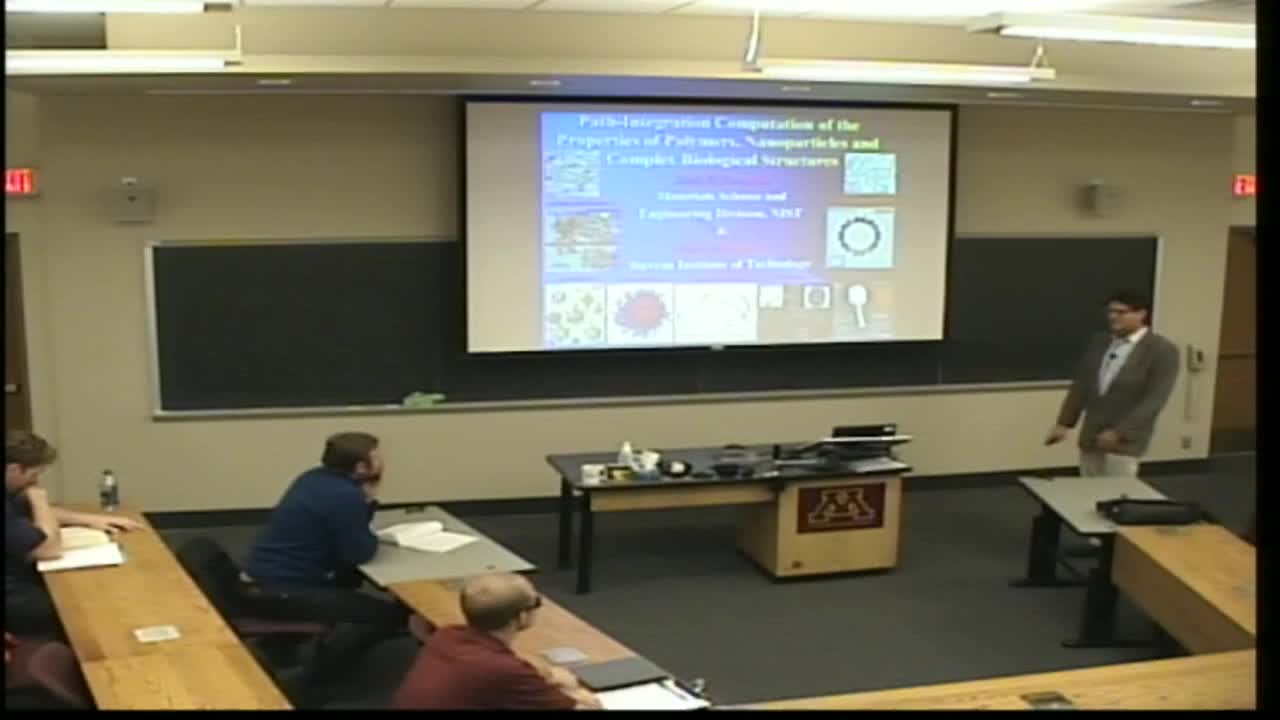Numerical Path-Integration Computation of the Transport Properties of Polymers Nanoparticles and Complex Biological Structures
Presenter
October 25, 2013
Keywords:
- Polymers
MSC:
- 82D60
Abstract
Many boundary value problems arising in materials science modeling involve
complicated boundary shapes and boundary data, making analytic solution based
on conventional differential equation methods difficult. In particular, it is
important to develop effective computational methods for calculating the
transport properties of polymers and complex-shaped particle aggregates arising
in materials science and biology. As a first step towards attacking this broad
class of problems, we focus on the problem of calculating basic solution
transport properties of isolated particles having essentially any geometry
using a novel computational method involving path integration. The basic
concepts behind the method are described and the method is validated in cases
where exact analytic, or at least highly accurate numerical estimates, are
known for comparison. After defining our method, validating its accuracy, some
applications of the program are given to some non-trivial problems; nanotubes
treated as either rigid rods or ensembles worm-like chains of finite
cross-section, DNA, nanoparticles with grafted chain layers and knotted
polymers. The path-integration method is evidently a powerful tool for
computing basic transport properties of complex-shaped objects and should find
wide application in polymer science, nanotechnological applications and
biology.
